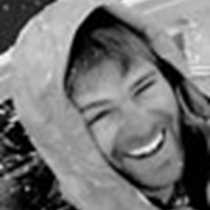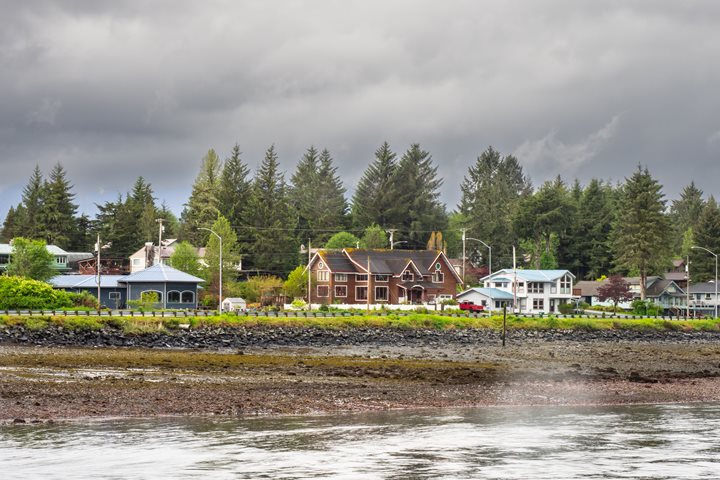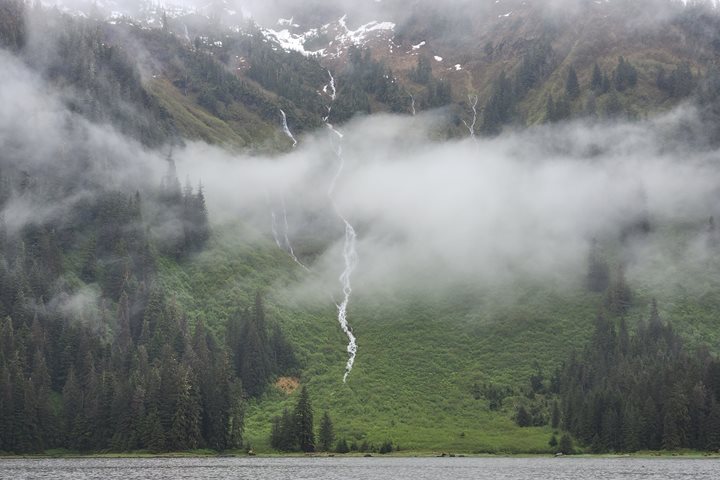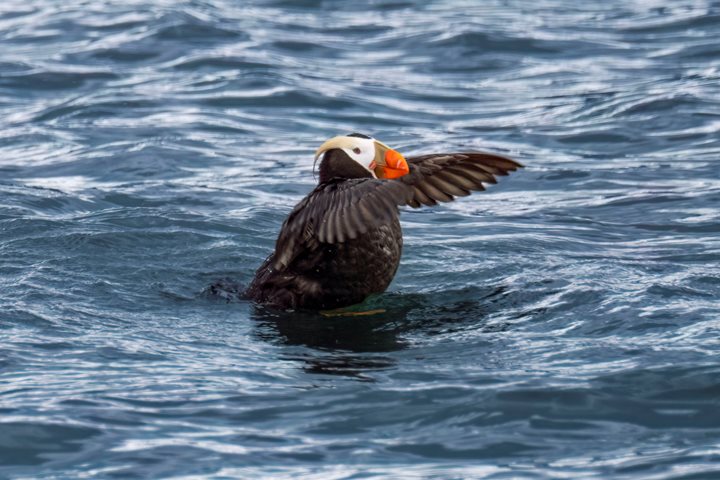Rosy pink clouds graced the sky as the sun found the National Geographic Sea Lion tucked into Rodman Bay with an array of crab pots to the north and a bald eagle atop a Sitka spruce to the south. Cruising out of the bay, breakfast was served, followed by an “entrée” of Stellar sea lions basking in the sun on a channel buoy. Crew members shared the procedures for and safety practices related to transport and exploration on land adventures. Elise Lockton clearly set the expected patterns of behavior as related to bear encounters.
Cruising up Chatham Strait, a humpback whale sighting led to 30 minutes of up-close observation of the ventral plates and baleen of the humpback, single whale bubble-netting, fluke photography and hair-follicle explanations. Naturalist Elise Lockton shared about the feeding, migration and mating habits of the humpback as our friendly humpback eloquently and freely shared its lifestyle, gently rising within 15 yards of the first mate’s careful positioning of National Geographic Sea Lion’s bow and neutral propellers.
After a delectable lunch, photo instructor Jeff Litton shared photographic tips for the novice and advanced photographers. Using comparative slides, he demonstrated composition and techniques for photographing nature. Whether “point & shoot” or macro-focus lens adjustment, Jeff Litton clearly had a message for each photographer: learn by exploring through your lens, whether that of a camera or of your eye.Dropping anchor in Pavlof Bay, guests were greeted by a coastal brown bear atop a small waterfall on their 1st Alaskan wilderness experience. Shy and passive, the brown bear paced back and forth across the waterfall prior to retreating into the forest on the opposite side of the creek from our guest. Out of a penchant for safety, naturalists guided guests through the forest along bear trails (but no bears) while identifying flowers, ferns, lichens, and conifers. Emerging into a marshland, which constitute 20% of Alaska, guests were treated to bog orchids, red alders, skunk cabbage, and lily pads. Giving thanks for their waterproof boots, guest experienced a part of Alaska they least expected: kettle ponds and marshlands.
On our return hike, the tide had dramatically dropped, revealing blue mussels, kelp, and barnacles in the inter-tidal zone. And to every hiker’s pleasure, sockeye salmon were jumping as they migrated back to their natal stream to reproduce and return the nutrients of their body to the freshwater stream and forest landscape that spawned their early growth. Meanwhile, kayakers were able to paddle up the stream inlet to get a close view of the sockeye salmon. As guests returned to National Geographic Sea Lion, underwater specialist Shaylyn Potter dove in the cove and photographed the undersea life to share with the guests during our evening program. But just as we were getting ready for dinner, the Captain steered the National Geographic Sea Lion alongside a pod of about six orca whales for about 30 minutes. This marine mammal encore was a fitting tribute to the diversity of life supported by the nutrient rich regions of SE Alaska.









